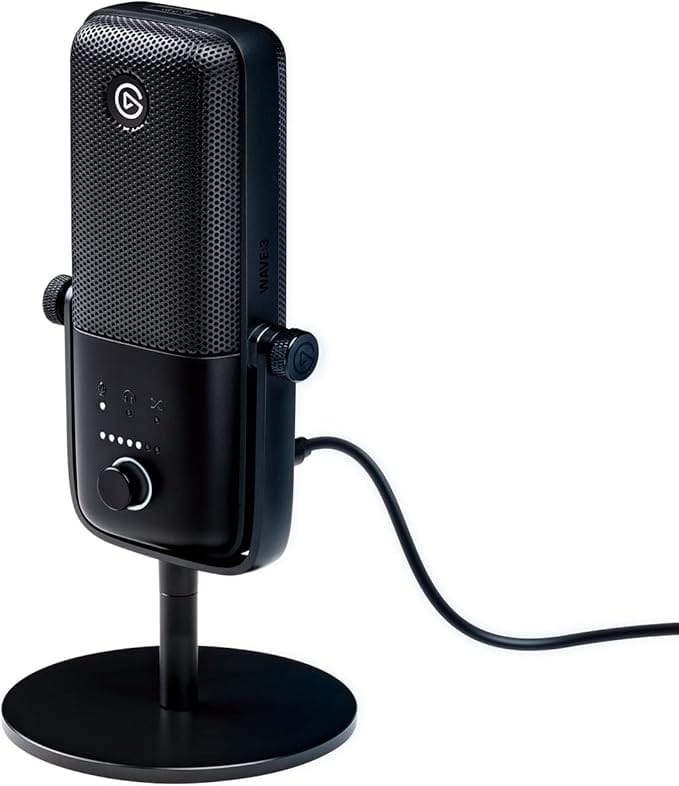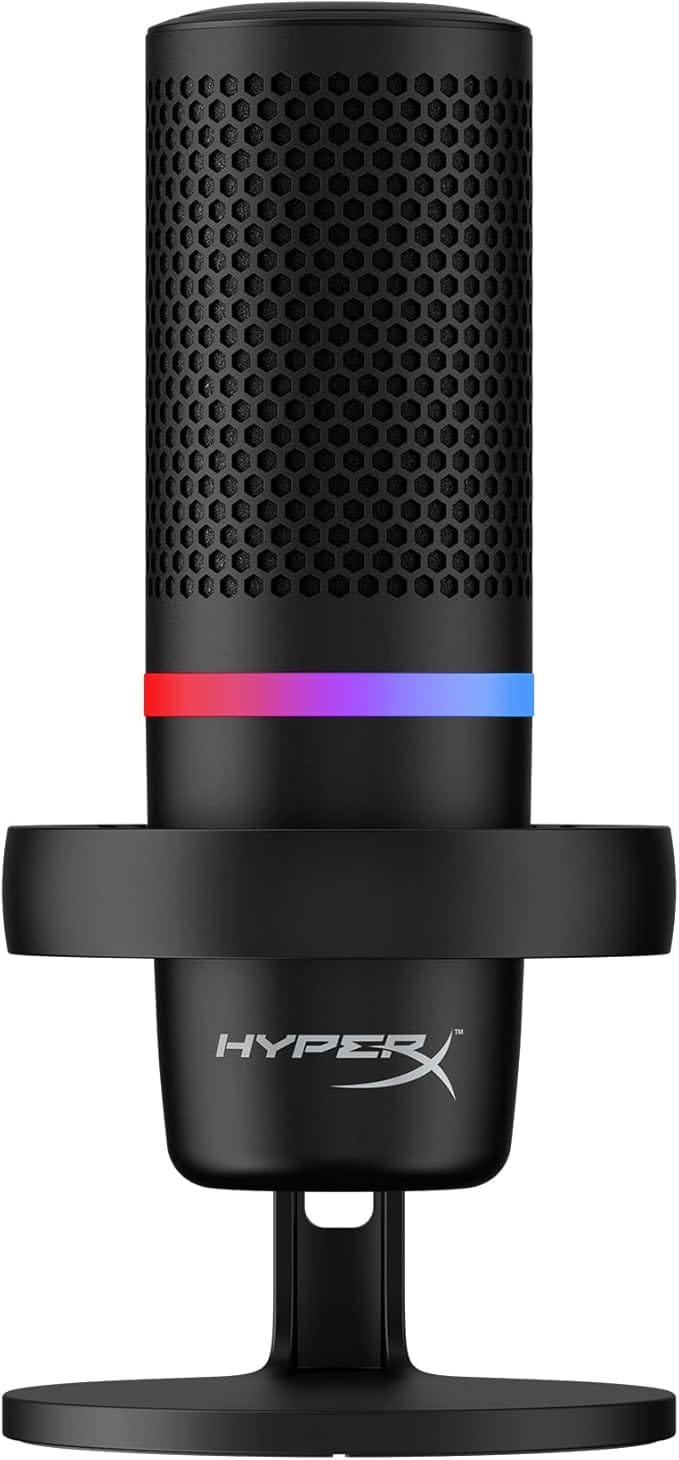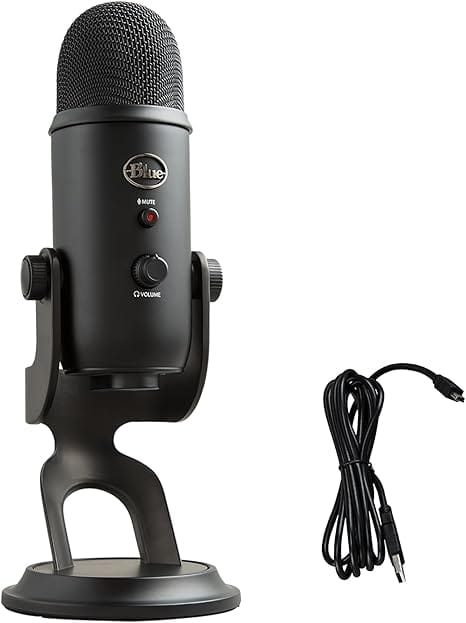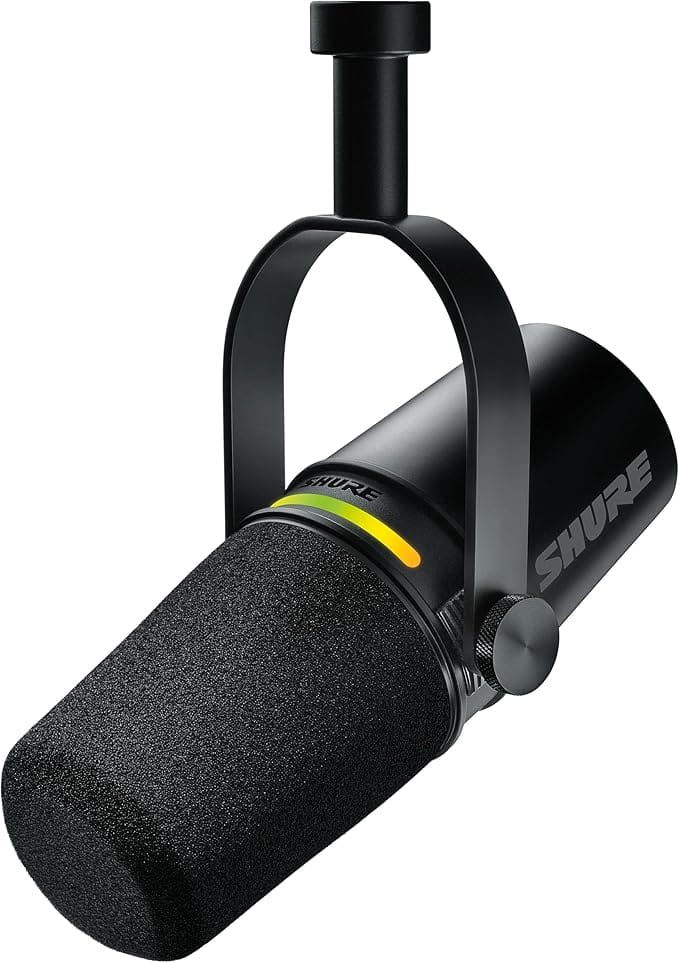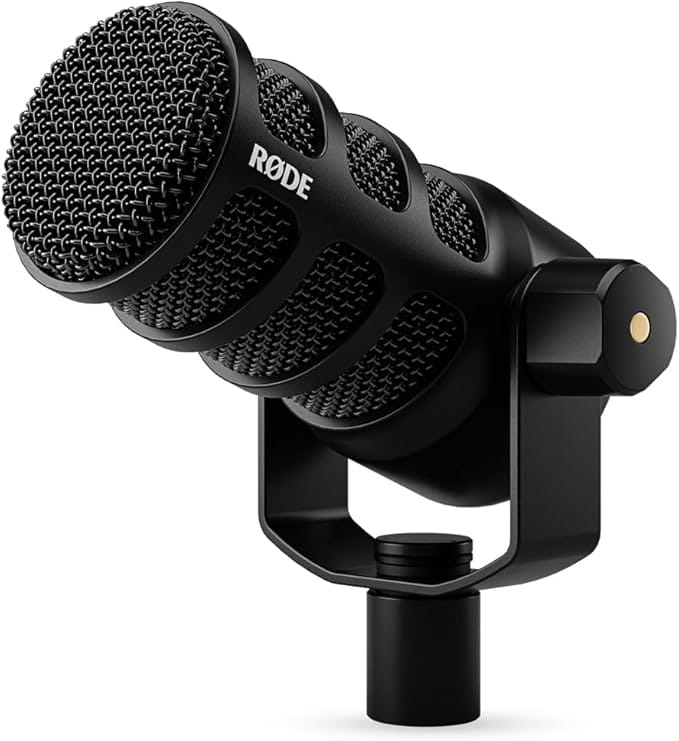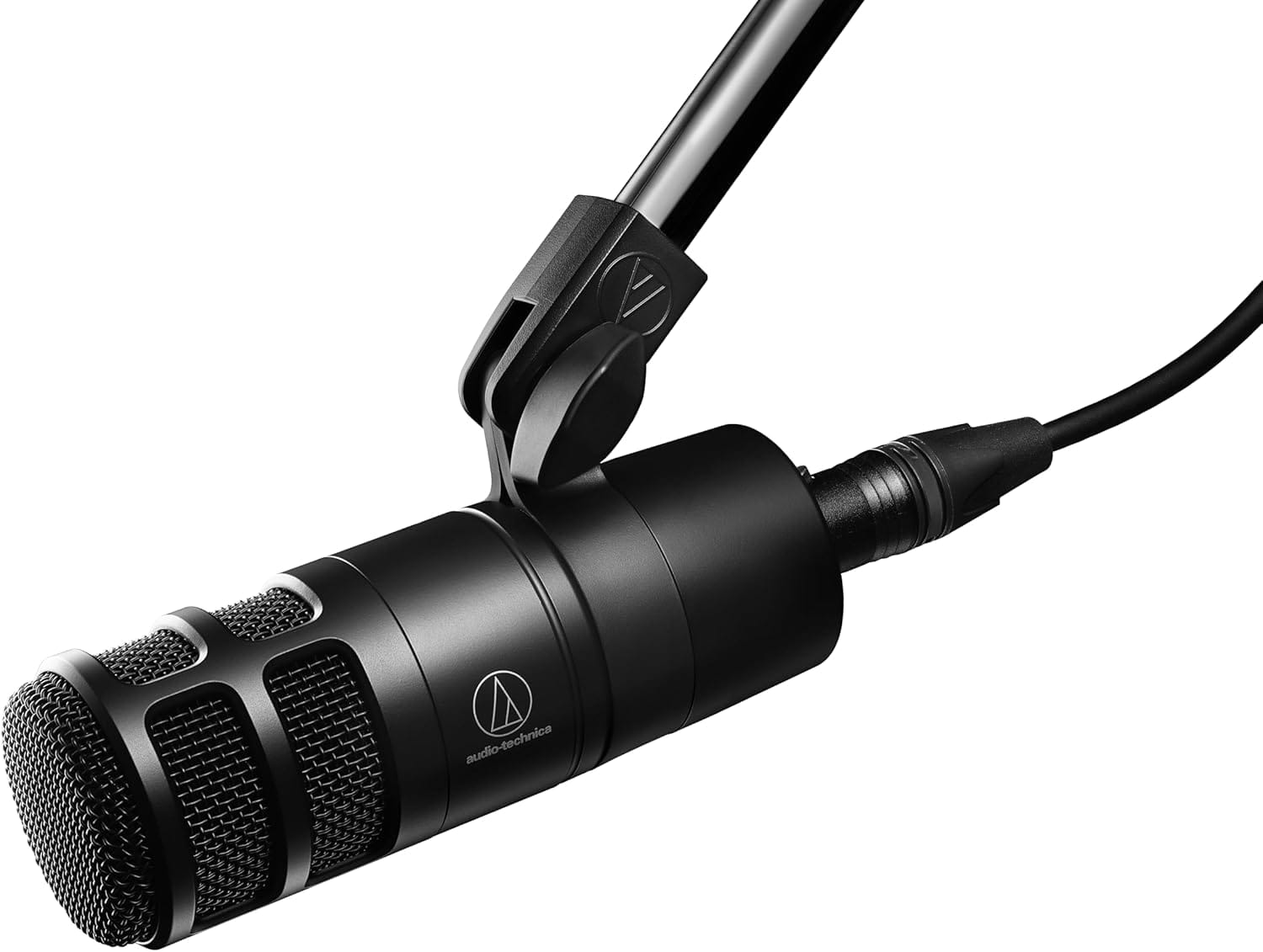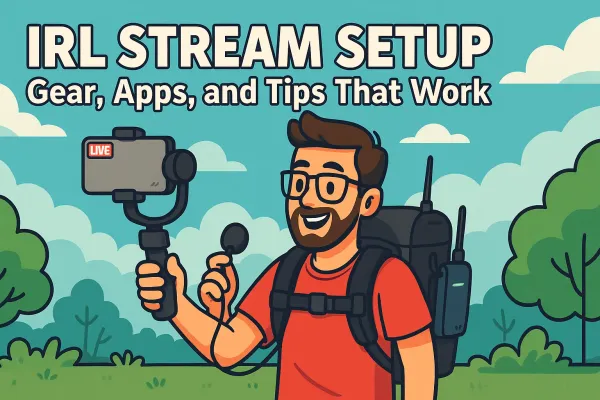The Best Microphones for Streaming in 2025
Discover the best streaming microphones in 2025 to upgrade your audio, boost viewer retention, and level up your Twitch, YouTube, or podcast setup.
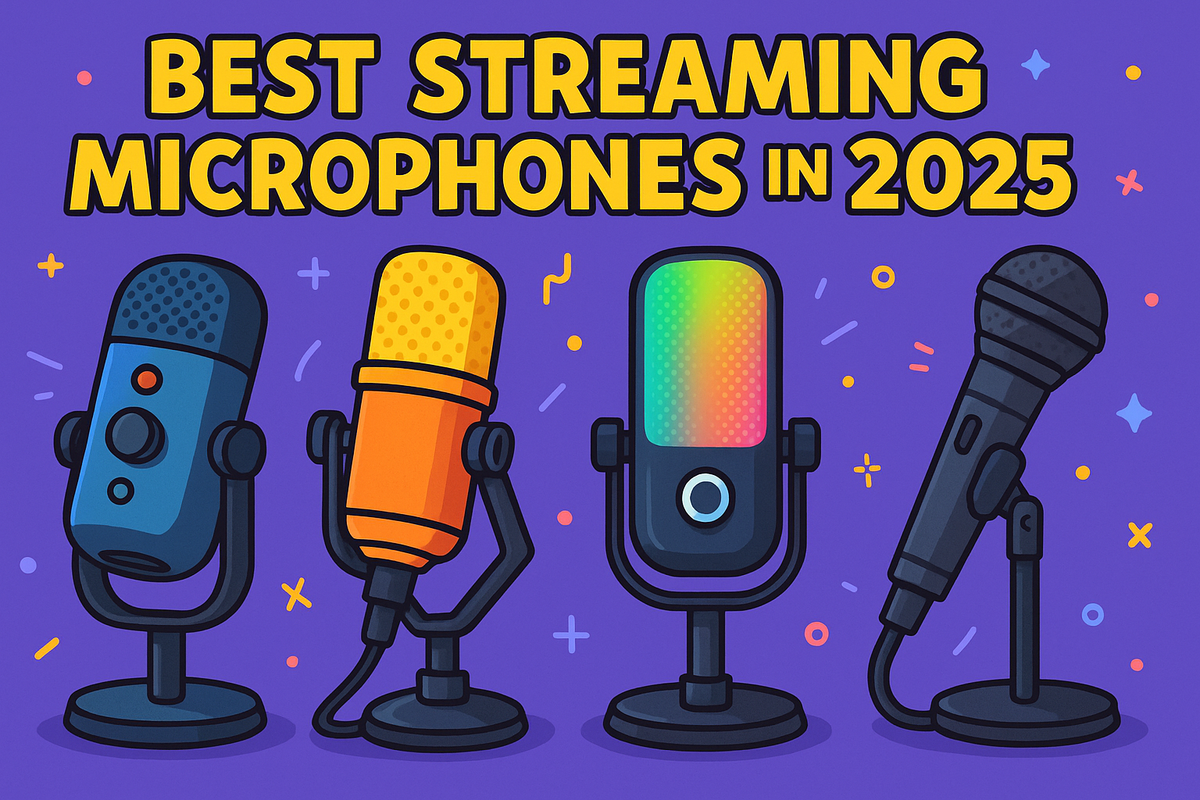
Microphone Quality Still Matters in 2025
There’s one golden rule in streaming that hasn’t changed, no matter how many AI co-hosts or hologram overlays show up: viewers will forgive bad video, but they will not forgive bad audio. You can have the crispiest 4K webcam or the smoothest scene transitions, but if your mic sounds like you're broadcasting from a tin can in a hurricane, people will click away fast.
In fact, a study by TechSmith found that 75% of viewers will leave a stream with poor audio within just 90 seconds. That’s less time than it takes to explain why you’re still stuck in Gold rank.
Good audio doesn’t just stop people from leaving, it actively helps you grow. Crisp, clean sound makes you easier to listen to over long sessions, keeps chat engaged, and encourages viewers to stick around for hours. If you're aiming for more subscribers, better watch time, or hitting affiliate and partner goals on Twitch, solid audio is your secret weapon.
And here’s something many streamers overlook: platform algorithms now factor in production quality when surfacing content. Twitch, YouTube, and even Kick are rewarding streams that offer a better viewer experience. According to Twitch's broadcasting guidelines, optimizing audio quality is part of their recommended setup. Better audio can improve your discoverability, which means a good mic isn’t just about sounding nice but actively helps you get found!
If you’re serious about streaming in 2025, your microphone can’t be an afterthought.
Key Features to Look For in a Streaming Microphone
Picking the right microphone can feel like wandering into a music store with no map. There are so many options, so many specs, and about a thousand YouTube reviews telling you different things. Let’s cut through the noise and break down what actually matters when you’re streaming.
USB vs. XLR: Which One Fits Your Setup?
If you’re starting out or you just want something that plugs in and works, USB microphones are the go-to. They connect directly to your PC. They're perfect for solo streamers, gamers, or anyone who’s not ready to deep-dive into audio engineering.
But if you’re looking to level up with pro-level sound, more control, and room to grow, XLR is what you should set your attention to. XLR mics require an audio interface (like a GoXLR Mini or Focusrite Scarlett), but they offer better sound quality, lower latency, and the ability to upgrade other parts of your audio chain over time. This is the route most full-time streamers and podcasters eventually take.
Quick takeaway:
- USB = Easy plug-and-play, affordable, great for beginners.
- XLR = Pro sound, scalable setups, more control.
Cardioid, Dynamic, Condenser: What You Actually Need
Not all microphones listen the same way.
- Cardioid Pattern: This is what you want for streaming. It focuses on your voice and ignores most background noise. It’s like having a conversation where the mic’s wearing blinders.
- Dynamic Microphones: These are workhorses that reject a ton of ambient noise. Perfect if you’re in a noisy room, near a PC fan, or have roommates testing their DJ skills in the next room.
- Condenser Microphones: These mics are super sensitive and will pick up the tiniest sounds, including keyboard clicks, your chair creaking, and maybe even your neighbors if you have thin walls. They can sound fantastic, but you’ll need a treated room or some audio tweaking to make them shine.
Must-Have Controls: Gain, Monitoring, and Mute
- Built-in Gain Control: Lets you adjust your input level right from the mic. Crucial for avoiding ear-shattering peaks or barely-there audio.
- Headphone Monitoring: Real-time monitoring means you can hear exactly what your audience hears. No surprise static, no quiet whispers when you thought you were booming.
- Mute Button: Sounds basic, but being able to quickly mute your mic mid-sneeze or during a sudden background noise crisis? That’s a game-changer.
Mics like the Elgato Wave:4 and Shure MV7+ nail this with easy-to-reach controls and visual feedback so you’re not guessing.
Platform and Software Compatibility
Your mic needs to play nice with Twitch, YouTube, OBS, Streamlabs, and Discord. Luckily, most modern USB and XLR mics are plug-and-play with these platforms, but some, like the Elgato Wave series, offer software that integrates directly with OBS and Stream Deck for even smoother control.
Before you buy, check if the mic:
- Works seamlessly with your streaming software.
- Supports your OS (Mac, Windows, sometimes mobile).
- Has low enough latency to keep your voice in sync with your video.
The best mic is the one that fits your workflow, sounds clean, and doesn’t make you fight with drivers or settings every time you go live.
Best USB Microphones for Streamers in 2025
When it comes to USB microphones, 2025 has some killer options that bring pro-level sound without making you mess with complex audio setups. These mics are perfect for streamers who want crystal-clear audio, easy plug-and-play functionality, and a few smart features to make life easier on stream.
Elgato Wave:3 – Streamer-Friendly, Studio-Ready
The Elgato Wave:3 is the latest evolution of the wildly popular Wave series, and it’s a solid pick for beginner to intermediate streamers.
What sets this mic apart is Clipguard technology, which automatically prevents audio distortion even if you get loud.
It also offers real-time monitoring with zero latency and integrates directly with the Elgato Stream Deck, so you can control your audio mix on the fly without tabbing out. Plus, the Wave Link software acts like a mini audio mixer, letting you balance game sound, voice chat, and music with ease.
Pros:
- Easy setup, super user-friendly
- Clipguard saves you from peaking disasters
- Excellent integration with Elgato streaming ecosystem
Cons:
- Limited to cardioid pattern
- Slightly more expensive than basic USB mics
If you’re building your stream setup around Elgato gear, this mic is a no-brainer.
HyperX DuoCast – Style Meets Simplicity
The HyperX DuoCast is built for gamers, variety streamers, and Just Chatting pros who want great sound with fast, no-fuss setup.
It’s plug-and-play, lightweight, and versatile, featuring two pickup patterns: cardioid (for streaming solo) and omnidirectional (for podcasts or multi-guest setups).
What really sells it? The built-in RGB lighting. Yep, you can sync it to your streaming theme and tweak it using HyperX’s NGENUITY software. It’s a small touch, but a good mic that matches your stream’s vibe? Not a bad flex.
Pros:
- Dual pickup patterns for flexible setups
- Easy mute sensor on top
- RGB customization to match your brand
Cons:
- No built-in audio mixing software
- Doesn’t reject background noise as well as dynamic mics
Why DuoCast instead of QuadCast?
1. The DuoCast Is Simpler and More Streamlined
The QuadCast is a fan favorite, but it comes with four pickup patterns: cardioid, omnidirectional, bidirectional, and stereo. Most streamers never use anything but cardioid. The extra patterns can be overkill, especially if you’re not doing in-person interviews or complex audio setups. The DuoCast trims that down, focusing on the two patterns most streamers actually need.
If you want to keep it lean and fast, the DuoCast saves you from messing with extra settings you’ll probably never touch.
2. The DuoCast Looks Cleaner and Feels More Modern
The DuoCast is lighter, sleeker, and honestly just looks better on camera. It’s got RGB accents that can match your stream branding, which is a big visual upgrade over the static red of the QuadCast.
3. Price and Portability
The DuoCast typically comes in cheaper than the QuadCast while still packing excellent audio quality. It's also lighter and less bulky, making it easier to position and better for smaller desks or travel setups.
4. You Probably Don’t Need Stereo Mode
The QuadCast’s stereo pattern is great for ASMR, but most streamers, especially gamers and Just Chatting creators, won't benefit from it. The DuoCast focuses on what you actually need, and skips features that sound impressive but don’t really serve you on Twitch or YouTube.
So Why Choose the DuoCast Over the QuadCast?
If you want a simple, modern, fast mic that looks great, sounds great, and doesn’t overcomplicate your setup, the DuoCast is the better buy.
You’re paying for the features you’ll actually use, not the ones you’ll forget are even there.
For fast, stylish setups where you just want to hit “Go Live,” the DuoCast delivers.
Blue Yeti X Pro (2025 Edition) – The Classic, Upgraded
The Blue Yeti X Pro 2025 Edition is the heavyweight champion of USB mics that refuses to retire. This year’s model brings higher bit-depth recording for even cleaner sound and a sleeker, more durable design.
It’s loaded with on-mic LED metering that lets you visually track your levels in real-time, super useful if you’re not monitoring with headphones. The updated Logitech G HUB software gives you deep control over EQ, gain, and pickup patterns.
You still get the classic Blue Yeti versatility with multiple pickup modes (cardioid, omni, bidirectional, and stereo), which makes this mic perfect for streamers, podcasters, and multi-person setups.
Pros:
- Four pickup patterns for maximum flexibility
- Built like a tank
- Visual level meter right on the mic
Cons:
- Picks up background noise in untreated rooms
- Large desk footprint
If you stream in a quieter space and want one mic that can handle just about anything, the Yeti X Pro still earns its spot in 2025. Just remember, it hears everything so a little room treatment goes a long way.
Each of these USB mics hits a sweet spot for different types of streamers, whether you’re gaming, chatting, or podcasting live. Pick the one that matches your style, setup, and streaming goals.
Best XLR Microphones for Pro Streamers
If you’re ready to level up your audio game, XLR microphones are the pro streamer’s choice. They offer better sound quality, more control, and smoother upgrades down the road. Plus, most of these now come with USB ports too, which means you can start simple and expand later without buying a new mic. Here are the top XLR picks for 2025.
Shure MV7+ – Hybrid Power, Built for Streamers
The Shure MV7+ is basically the streamer’s dream mic in 2025. It’s a hybrid USB/XLR microphone, which means you can plug it straight into your PC now and transition to a full XLR setup later without switching gear. Future-proofing, baby.
One of the standout features is the built-in DSP (Digital Signal Processing) that gives you real-time compression, EQ, and limiter settings baked right into the mic. This means your audio sounds polished straight out of the box, no extra plugins needed.
Whether you’re grinding ranked on Twitch or recording podcast episodes, the MV7+ is a top-tier all-rounder.
Pros:
- USB/XLR flexibility
- Real-time audio processing onboard
- Excellent off-axis rejection
Cons:
- Software can feel a bit clunky for first-time users
- Higher price point
If you want pro sound with training wheels that can come off later, the MV7+ is hard to beat.
Rode PodMic USB – Tough, Versatile, and Streamer-Ready
The Rode PodMic USB is a rugged, broadcast-quality microphone that hits the sweet spot for growing streamers. It’s got dual USB/XLR connectivity, so you can keep things simple now or upgrade later with an audio interface.
Rode’s design is as tough as they come, with a built-in pop filter that cuts down on plosives without needing extra gear hanging in front of your face. The PodMic USB pairs perfectly with Rode’s free Rode Connect software, which acts like a virtual mixer, giving you live control over multiple audio sources.
Pros:
- Dual connectivity (USB/XLR)
- Integrated pop filter
- Rugged, compact build
Cons:
- Slightly heavier than similar mics
- USB audio quality isn’t as rich as XLR output
For streamers who want a mic that can survive travel, chaotic desk setups, or just the occasional elbow bump, the PodMic USB is a rock-solid choice.
Audio-Technica AT2040 – Pro Sound on a Budget
The Audio-Technica AT2040 is a budget-friendly dynamic XLR mic that absolutely punches above its weight class. It’s got a tight cardioid pickup pattern that does a fantastic job rejecting room noise, making it a solid option if your streaming setup isn’t acoustically treated.
This mic delivers that broadcast-style sound without requiring deep audio knowledge. It’s straightforward, sounds great, and won’t eat your entire upgrade budget.
Pros:
- Affordable without sounding cheap
- Excellent background noise rejection
- Compact and simple to use
Cons:
- XLR only. No USB option
- No onboard controls (you’ll need an interface or mixer)
If you’re ready to dive into XLR but don’t want to break the bank, the AT2040 is a pro move that still leaves room in your budget for that Stream Deck you’ve been eyeing.
These XLR mics are built for streamers who are serious about their sound. Whether you’re future-proofing with hybrid options or going all-in on budget-friendly pro gear, each of these mics will make your voice cut through the noise.
Essential Accessories to Maximize Your Microphone
Even the best microphone won’t save your stream if you’re using it wrong or missing key accessories. Getting pro-level sound isn’t just about the mic, it’s about how you set it up. Let’s break down the must-have tools that take your audio from "decent" to "dang, that’s clean."
Boom Arms: Positioning Is Everything
A boom arm isn’t just for aesthetics.
Having your mic on a proper boom arm allows you to place it in the sweet spot: around 6 to 12 inches from your mouth, slightly off-axis. This helps capture your voice clearly while minimizing breathing sounds and keyboard clatter.
It also keeps your mic stable and isolated from desk bumps, mouse clicks, and sudden movements. Cheap desk stands? They pick up every tap like you're playing bongos under your mic.
Look for boom arms with:
- Full range of motion
- Strong tension springs
- Good cable management
The Elgato Wave Mic Arm LP and the RODE PSA1+ are fan favorites in 2025 for their smooth movement and low-profile designs that don’t block your camera shot.
Pop Filters: Protecting Your Audio from Plosives
If you’ve ever blasted a “P” sound directly into your mic and made your chat’s eardrums explode, congratulations, you’ve met the plosive problem.
Pop filters and foam windshields are simple tools that reduce these harsh bursts of air before they hit your mic’s diaphragm.
They also help protect your mic from moisture (yes, your breath is doing more damage than you think).
There are two main types:
- Mesh pop filters: Traditional, clip-on filters that sit a few inches in front of the mic.
- Foam covers: Fit directly over the mic and are less visually distracting.
Some mics, like the Rode PodMic USB, come with built-in pop protection. But for most setups, adding a pop filter is a quick, inexpensive upgrade that makes a noticeable difference.
Audio Interfaces: Why GoXLR Mini and Focusrite Scarlett Still Matter in 2025
If you’re using an XLR microphone, you need an audio interface. This is the middleman that powers your mic and gets your voice into your PC.
Two names still dominate the game in 2025:
- GoXLR Mini: A streamer’s best friend. Real-time volume sliders, mute buttons, and easy routing for game, chat, and mic audio. It’s compact, reliable, and doesn’t overcomplicate your setup.
- Focusrite Scarlett 2i2 (3rd Gen+): Perfect if you want studio-quality sound with a clean, no-frills interface. Great for podcasters and creators who want fine-grain control over gain and input levels.
Even with software-based mixers becoming more popular, hardware interfaces still provide more stability, lower latency, and better sound. Plus, you won’t get caught in the middle of a stream fiddling with virtual sliders when a physical fader could’ve saved you.
Without a proper interface, your expensive XLR mic is just an expensive desk ornament.
Streaming Microphone Setup Tips for Crisp Audio
Buying a great microphone is only half the battle.
How you set it up can make or break your sound. Even the most expensive mic will sound bad if you position it wrong or crank the levels into oblivion. Here’s how to dial in your setup for that clean, professional audio your stream deserves.
Mic Placement: Get Close, Stay Off-Axis
One of the easiest ways to instantly improve your sound is proper mic placement. You want your mic about 6 to 12 inches away from your mouth, slightly off to the side (off-axis).
Why off-axis? Because when you speak directly into the mic, you send harsh air bursts, called plosives, straight into the capsule. Slightly angling the mic keeps your sound clean while avoiding those audio landmines.
Also, the closer you are to the mic, the better your voice will sound. You’ll capture more warmth, more detail, and cut out more background noise naturally. If you’re leaning back from your mic, your sound will immediately get thin, distant, and drowned out by your room.
Quick fix:
- Use a boom arm to easily lock in this position
- Stay consistent. Don’t lean in and out while streaming
Room Treatment: Kill the Echo, Keep the Vibes
You don’t need to turn your room into a professional studio, but a few simple tweaks can massively improve your sound. Even the best cardioid mic will pick up room reflections if you’re streaming in a bare, echoey space.
Here’s what actually helps:
- Foam panels behind and around your mic (not just random spots on your wall)
- A rug or carpet under your desk to absorb floor reflections
- Soft furniture, curtains, and bookshelves can naturally deaden sound
If your room sounds like you’re streaming from a cave, adding these basic fixes can cut out reverb without dropping hundreds on pro-level panels.
Gain Staging: Set It Right or Sound Like Garbage
Gain staging is where most beginner streamers mess up.
Set your mic’s input too low and your voice sounds weak and gets lost. Set it too high and your audio clips, distorts, and drives your viewers nuts.
The goal is to set your levels so your voice peaks around -10 dB to -6 dB on your input meter when you’re speaking at your normal streaming volume.
If you’re using an audio interface:
- Adjust the gain knob until you’re consistently hitting that sweet spot.
- Watch for red peaks. If you see them, you’re too hot.
If you’re using a USB mic with software control:
- Keep your input slider around 60-80%, but test it... Each mic is different.
Getting this right will make your audio sound crisp, balanced, and clear, without needing heavy post-processing.
Real-Time Monitoring: Fix Problems Before Chat Roasts You
Real-time monitoring is a game-changer. It lets you hear exactly what your mic is capturing, in the moment, with no delay.
Many mics (like the Elgato Wave:4 and Shure MV7+) have built-in headphone jacks so you can plug in and monitor yourself directly. If you’re using an audio interface, you can usually toggle direct monitoring there.
Why does this matter?
- You’ll catch clipping, static, or weird buzzing before chat has to scream “MIC IS BROKEN!”
- You’ll know if you’ve drifted away from the mic or bumped your boom arm mid-stream
- You can keep your mix balanced between your voice, game audio, and background musicq
Crisp audio doesn’t happen by accident. It’s the result of smart mic placement, a little room treatment, properly set gain levels, and monitoring that lets you fix issues fast.
At the end of the day, your voice is your brand. It’s the front line of your content, the thing your viewers hear whether you’re gaming, chatting, or podcasting. A clean, professional sound builds trust, keeps people listening, and lets your listeners know that you know what you're doing.
Reinvesting in good audio isn’t just about sounding better, it’s about growing faster.
Better audio keeps viewers on your stream longer, increases your chances of return visits, and helps you stand out in a sea of creators. People might forgive blurry webcams, but if your mic is popping, peaking, or muffled? They’re gone.
Platforms like Twitch and YouTube are rewarding quality. Both recommend optimizing audio to improve viewer experience and boost discoverability. You can dig deeper into their official guidelines here:
Good audio pays off. It builds credibility, strengthens your brand, and gives your audience a reason to stick around.
If you’re serious about streaming in 2025, don’t cut corners on your sound, it’s the smartest investment you can make.


